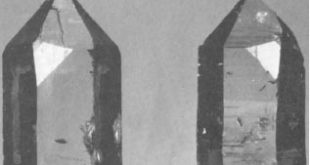May 30,1881. — The Academy may remember that we began the study of hydrophobia in the month of December last, assisted by Messrs. Chaniberland and Boux, whom M. Thuillier kindly joined.
By comparing the external symptoms of that malady with certain microscopical observations made on the brains of persons or animals who had died of hydrophobia, and by considering that it has not as yet been possible to communicate the affection by inoculation of the blood of rabid individuals, several authors were led to the belief that the central nervous system, and in particular the medulla oblongata, which joins the spinal cord to the brain and cerebellum, are specially interested and active in the development of the disease. This opinion was upheld with great distinction, two years ago, by Dr. Duboue. Nevertheless, the Lyons experiments leave room for much uncertainty as to the true seat of elaboration of the rabid virus.
‘ The rabid virus,’ says the learned experimenter, ‘ exists in the saliva, as all know. But where does it come from ? Where is it elaborated ? . . .
‘ Hitherto I have only been able to detect the presence of the virus in the mad dog, in the lingual glands and in the bucco-pharyngeal mucous membrane.
‘ More than ten times, and always with the same want of success, have I inoculated the substance extracted by compression from the brain, cerebellum, and medulla oblongata of mad dogs.’ ‘
I have the satisfaction of announcing to the Academy that our experiments have proved more successful. On several occasions, and often with success, we have inoculated the medulla oblongata, portions of the frontal lobes of one of the cerebral hemispheres, and also the cerebro-spinal fluid. The hydrophobia thus produced presented the usual period of incubation.
The virus of rabies is, therefore, not exclusively contained in the saliva. It is present also in the brain, where it is found to possess a virulence at the least equal to that of the saliva of rabid animals.
One of the greatest difficulties of researches on hydrophobia consists on the one hand in the uncertainty of the development of the disease after inoculations and bites, and, on the other hand, in the long duration of the incubative period — that is to say, of the time which lapses between the introduction of the virus and the appearance of the symptoms of rabies. It is torturing to the experimenter to have to wait whole months for the result of a single experiment when the question studied ‘ Galtier, Bull. Acad, dc Med., Jan. 25, 1881. D requires very many such. Members will therefore undoubtedly be interested to hear that we have discovered a method for considerably shortening the duration of incubation of rabies and also of reproducing the disease with certainty.
That double result is secured by direct inoculation (after trephining the skull) on the surface of the brain of a healthy animal of the cerebral matter of a mad dog, taken out and inoculated in a state of purity.
The dog inoculated under such conditions shows the first symptoms of rabies in the course of one or two weeks, and death supervenes before the end of the third week. I may add that not a single one of the inoculations thus performed failed. So many dogs trephined and inoculated on the brain, so many cases of confirmed and rapidly developed hydrophobia. Considering the special characteristics of this method, one may foresee that the result will always be the same. The rabies developed has, furthermore, been sometimes dumb, at other times furiousthat is to say, rabies under one or other of its two habitual types.
I conclude with this short exposition of facts, because our sole object to-day is to lay claim to the discovery of a new method of research, the usefulness of which in practice all will apprehend.
 Pasteur Brewing Louis Pasteur – Science, Health, and Brewing
Pasteur Brewing Louis Pasteur – Science, Health, and Brewing 


